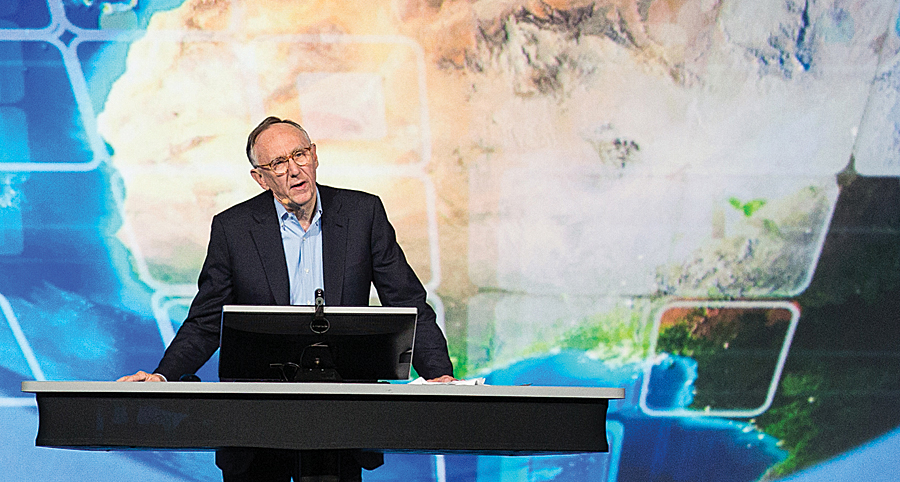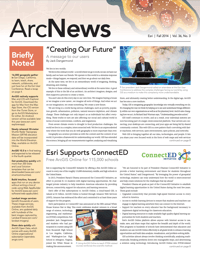A message to our users
We live in two worlds.
We live in the ordinary world—a world where we go to work, we eat, we have our family, and we have our friends. We operate in this world in a stimulus-response mode—things happen, we respond, and then we go about our daily lives.
At the same time, we live in an extraordinary world of imagining, thinking, dreaming, and creating.
We live in these ordinary and extraordinary worlds at the same time. A good example of this is the life of an architect. An architect imagines, designs, and then supports a process to create a vision.
You and I also do this every day in our own lives. We imagine buying a house or we imagine a new career…we imagine all sorts of things. And when we act on our imagination, we create something. We create a new future.
We are living in a world facing serious challenges, such as poverty, population growth, urbanization, pollution, natural resource depletion, and climate change. These challenges not only impact us as individuals but affect everything. These truths in turn are also affecting our social and cultural world in terms of social controversies, conflicts, and migrations.

From severe climate events to drought to food production challenges, the world we live in is a complex, interconnected web. We live in an unprecedented time where the work that you do with geography is more important than ever.
Geography as a science provides us with the context and the content of our world. It provides a framework for understanding our world. GIS has extended this science, bringing all our measurements together, analyzing and visualizing them, and ultimately creating better understanding. In the digital age, ArcGIS has become a new medium.
Today, GIS is integrating geographic knowledge into virtually everything we do. It’s changing the way we think by helping us to see and understand things differently, within our own organizations as well as at the planetary level. And it’s also changing how we act. As Richard Saul Wurman says, “Understanding precedes action.”
GIS itself continues to evolve, and as a result, your individual systems are now becoming part of a larger, interconnected platform. Your servers are connecting, your desktops are connecting, and your apps are being fed by shared community content. This web GIS is a new pattern that’s coevolving with faster machines, web services, open environments, open policies, and networks.
Web GIS is bringing together all our data, technologies, and people. It lets you share your own focused work in the form of web maps and web services throughout your organizations as well as on the web to the world. This creates a framework where we can collaboratively work to address the complex challenges facing our world.
Web GIS is also leveraging advancing technologies—the world of measurement, the world of computing, and the world of networks—and layering on top of that infrastructure. This “nervous system of the planet” brings our world’s information to life.
In addition, the app revolution is making this Web GIS, and all its content, available everywhere. Over time, anyone will be able to access this new medium of web services and web maps anytime, anywhere, on any device, bringing GIS to life in whole new ways and transforming how GIS professionals work.
Fundamental to this idea of creating the future is the concept of geodesign. Geodesign takes geographic information and links it to the design, decision-making, and planning process using collaboration. It does this by building the power of GIS into the process, allowing alternative plans to be visualized, compared, and evaluated. The end result is better, more informed decisions.
I was first introduced to this methodology almost 50 years ago by my professor, Carl Steinitz, and it set me on a course I’ve followed for my entire career. And it’s much more than just a landscape architecture concept or a planning concept. Geodesign is equally important for businesspeople wanting to locate stores as it is for farmers who want to plant crops. In fact, geodesign has a role to play in almost every activity.
For the GIS professional, geodesign extends your work from the science side into the creative side—from the ordinary world to the extraordinary world. I would like everyone to think about becoming geodesigners. It’s the right time for us all to move in this direction, because the technology is here now, and it can play an important role in helping us solve the world’s problems. The mission of creating a better future depends heavily on GIS professionals. It is you who can envision what’s possible, understand and embrace and fully leverage these new web GIS and geodesign tools, show leadership, collaborate and support designers and decision makers, and do the difficult work we have ahead of us.
Seeing the work you do, and knowing what I know about the technology and where it’s going, this isn’t just a possibility. I think it’s actually inevitable. As GIS professionals, you are already imagining the future and working hard to create it.
You are the future.


